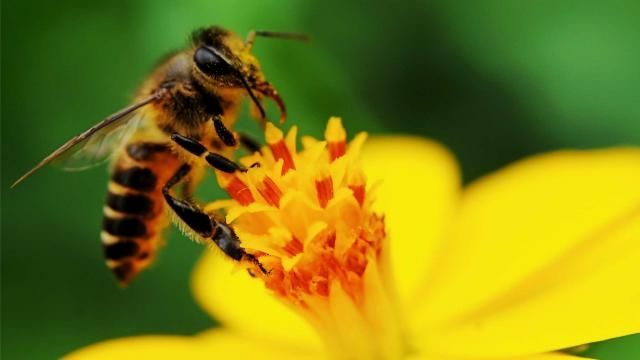Get Allergy and Asthma Relief Today
Board Certified Allergists Serving Both Children & Adults
The BUZZ about bee allergies
Knowing where to look for bees and what to look for if you are stung can help avoid some of the fear of bee allergy.
Where are bees found?
Honey bee nests are in tree hollows and old logs and generally they only sting when provoked. They usually leave in the stinger with the attached venom sac (although some yellow jackets also can leave their stinger).
Yellow jackets build nests in the ground, so you’re likely to see them when doing yard work, farming and gardening.
Hornets build large nests in trees and shrubs.
Wasps build honey combed nests in shrubs and under the eaves of homes and barns.
Yellow jackets, hornets and wasps are scavengers, often found at outdoor events where there is food or garbage and are more aggressive than honey bees.
What type of reactions can happen when stung?
The most frequent reaction to a sting is redness, swelling at the sting site and pain. Some people will have a large local reaction where the swelling can increase for 1 or 2 days and take 3 to 10 days to completely go away. The most dangerous reactions are called systemic reactions. Systemic reactions can cause a variety of symptoms such as generalized hives or swelling, difficulty breathing, swallowing or speaking, swollen tongue, hoarseness, dizziness, drop in heart rate, nausea, vomiting, diarrhea, loss of consciousness, seizures and sometimes even death.
What should I do if I am stung?
For the usual or large local reactions use an antihistamine like Benadryl (diphenhydramine), ice and if needed acetaminophen or ibuprofen for pain. If you are stung and start to have symptoms of a systemic reaction call 911. If you have had a systemic reaction, you need to know how and when to use injectable epinephrine and carry it with you.
How can I prevent being stung?
- Wear long pants, long sleeved shirts, shoes and socks and gloves when doing yard work. There is no need to avoid certain colors because bees do not recognize colors.
- Keep an insecticide handy to kill bees from a distance (insect repellants do not keep bees away).
- Be cautious when around food and near garbage containers.
When should I see an allergist?
Anyone who has had a systemic reaction should see an allergist. If a serious reaction has happened, the allergist will likely recommend skin testing for the bees. If the tests are positive, the doctor will probably recommend allergy shots. Once a person is on the top dose, there is less than a 5% chance that he or she will have another serious reaction (versus about a 60% risk if shots are not given). Sometimes, allergy shots may be recommended for a person who has had large local reactions if the person is likely to be stung in the future (such as a landscaper, or builder). Anyone who has had a serious reaction to a bee also needs to carry epinephrine (such as EpiPen, or AuviQ) anytime they are outside during bee season (in New England: from early March until late November).

